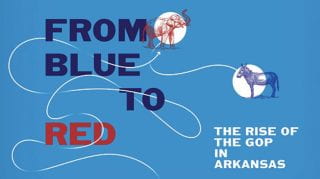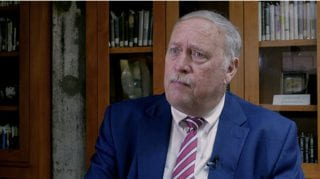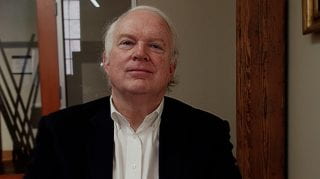Pryor Center Debuts ‘Blue to Red Oral History Project’ Tracing Political Shift
 The David and Barbara Pryor Center for Arkansas Oral and Visual History recently debuted “The Blue to Red Oral History Project,” which includes unique firsthand accounts and insights into the recent historical change in political partisanship in Arkansas.
The David and Barbara Pryor Center for Arkansas Oral and Visual History recently debuted “The Blue to Red Oral History Project,” which includes unique firsthand accounts and insights into the recent historical change in political partisanship in Arkansas.
The Pryor Center is part of the Fulbright College of Arts and Sciences at the U of A.
“The Blue to Red Oral History Project” is a collection of 19 interviews with political office holders, journalists, party officials and academics who observed this historic shift in Arkansas politics firsthand.
The entire collection, which includes complete transcripts and audio and video recordings, is available on the Pryor Center website.

A still from the Pryor Center’s Blue to Red Oral History Project interview with Asa Hutchinson, former Arkansas governor.
The interviews were conducted by John C. Davis, teaching associate professor of political science and executive director of the Pryor Center, which is based on the Fayetteville Square.
“The Pryor Center is very appreciative of those who graciously shared their time and insights with us as we completed this project,” Davis said. “The dramatic shift in our state’s partisanship is historically significant, and we at the Pryor Center strongly believe this collection will be of interest to anyone interested in Arkansas politics or the state’s history for years to come.”
Davis said that on the morning of Election Day in 2010, Democrats occupied three of the four Arkansas seats in the U.S. House of Representatives, both U.S. Senate seats, all state constitutional offices and decisive majorities in both chambers of the Arkansas General Assembly.

A still from the Pryor Center’s Blue to Red Oral History Project interview with journalist John Brummett.
Within five years Arkansas Republicans would hold all six U.S. congressional positions, every state constitutional seat and claim growing supermajorities in both state chambers.
Over the next two election cycles, Davis said that Republicans would enjoy unprecedented electoral success in Arkansas, the last remaining state of the once “Solid South” held by Democrats.
By 2015 the Republican Party — the same party that failed to recruit candidates in many high-profile races as recently as 2010 — not only held majorities in the state legislative chambers for the first time since Reconstruction but also had orchestrated one of the fastest, most powerful statewide political waves in the United States.

A still from the Pryor Center’s Blue to Red Oral History Project interview with journalist Rex Nelson.
“In 10 short years, from 2005 to 2015, the Natural State saw a dramatic, swift shift from Democratic Party majority control of government, stemming as far back as the 19th century, to Republican Party dominance,” Davis said. “It’s a fascinating journey, charted and shared through these interviews.”
About the David and Barbara Pryor Center for Arkansas Oral and Visual History: The David and Barbara Pryor Center for Arkansas Oral and Visual History is an oral history program with the mission to document the history of Arkansas through the collection of spoken memories and visual records, preserve the collection in perpetuity, and connect Arkansans and the world to the collection through the Internet, TV broadcasts, educational programs, and other means. The Pryor Center records audio and video interviews about Arkansas history and culture, collects other organizations’ recordings, organizes these recordings into an archive, and provides public access to the archive, primarily through the website at pryorcenter.uark.edu. The Pryor Center is the state’s only oral and visual history program with a statewide, 75-county mission to collect, preserve, and share audio and moving image recordings of Arkansas history.
About the Fulbright College of Arts and Sciences: The Fulbright College of Arts and Sciences is the largest and most academically diverse unit on campus with three schools, 16 departments and 43 academic programs and research centers. The college provides the majority of the core curriculum for all University of Arkansas students.
About the University of Arkansas: As Arkansas’ flagship institution, the U of A provides an internationally competitive education in more than 200 academic programs. Founded in 1871, the U of A contributes more than $2.2 billion to Arkansas’ economy through the teaching of new knowledge and skills, entrepreneurship and job development, discovery through research and creative activity while also providing training for professional disciplines. The Carnegie Foundation classifies the U of A among the few U.S. colleges and universities with the highest level of research activity. U.S. News & World Report ranks the U of A among the top public universities in the nation. See how the U of A works to build a better world at Arkansas Research and Economic Development News.
This story also appeared in the University of Arkansas News publication.

